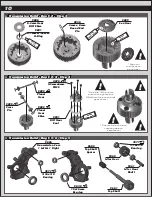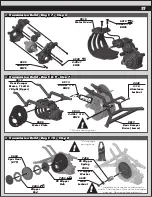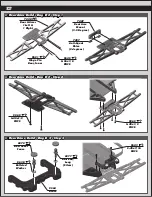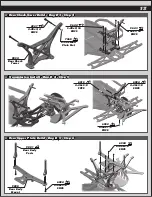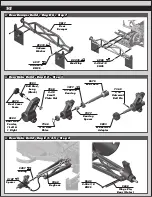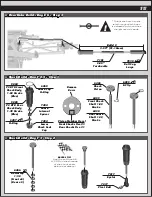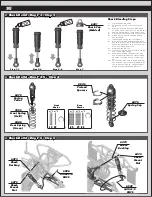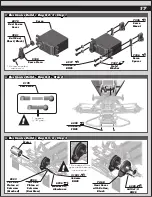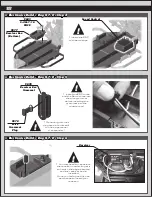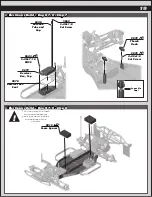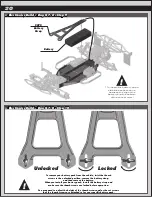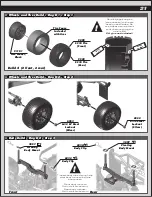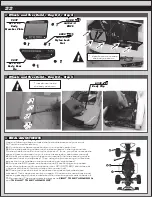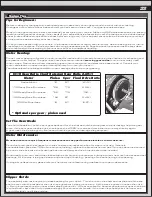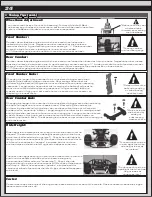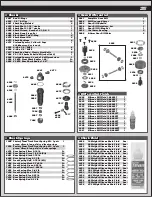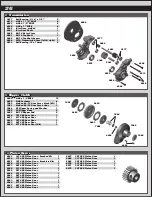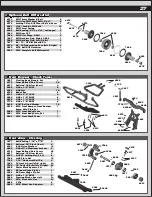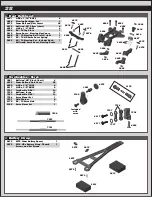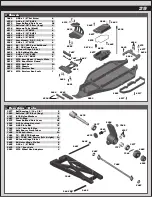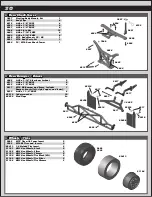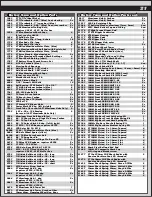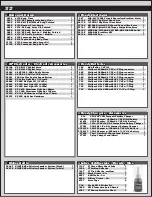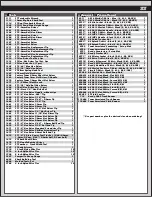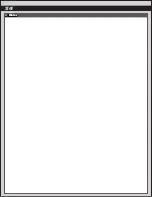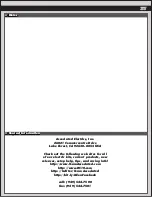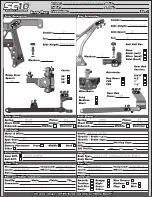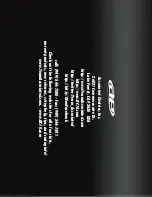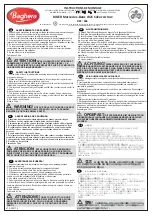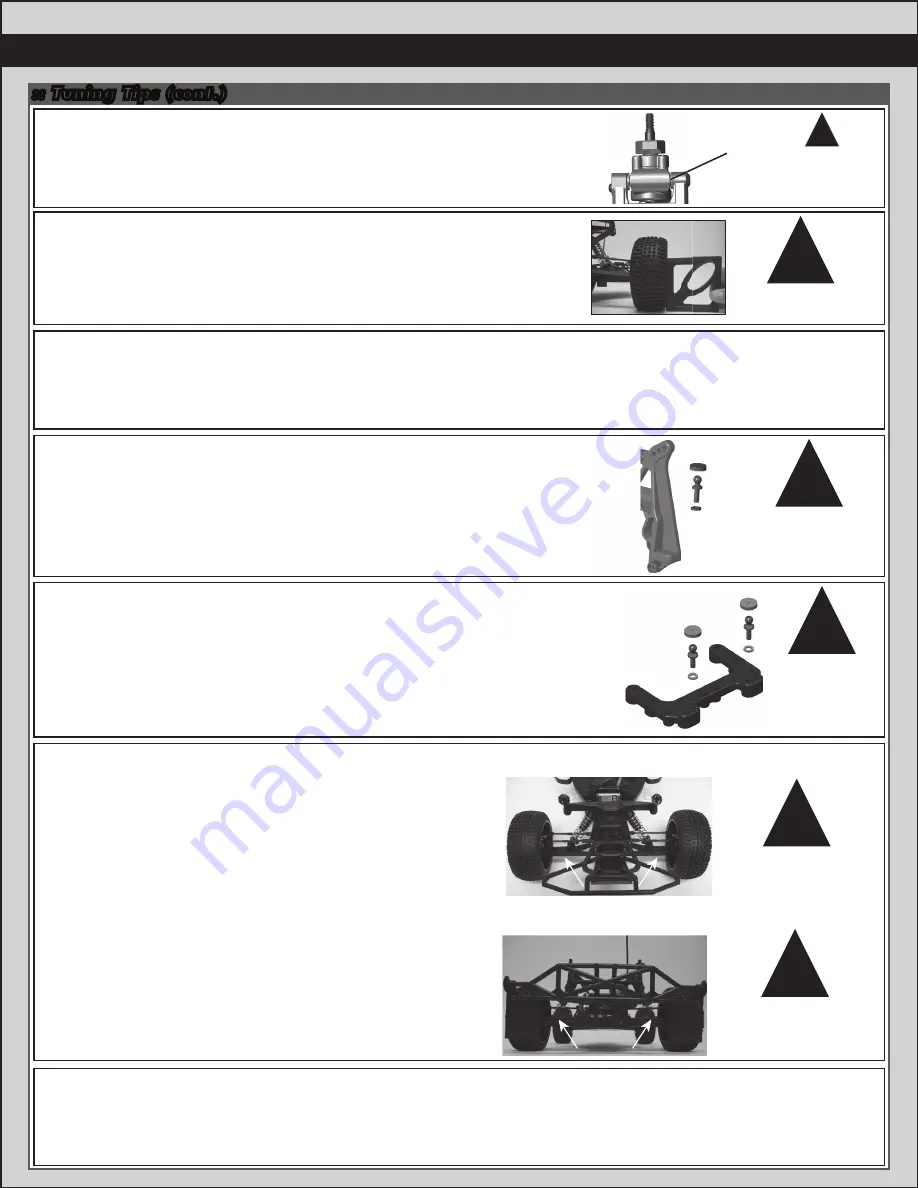
24
:: Tuning Tips (cont.)
Caster:
Caster describes the angle of the kingpin as it leans toward the rear of the vehicle. Positive caster means the kingpin
leans rearward at the top.
Rear Camber:
Camber describes the angle at which the tire and wheel rides when looked at from the back. Negative camber means
that the tire leans inward at the top. A good starting camber setting is -1°. Adding a small amount of positive camber,
where the top of the tire is leaning out, will tend to improve straight-line acceleration on loose tracks.
#1719 camber gauge can be used to more accurately set camber.
Front Camber Links:
Changing the length of the camber link is considered a bigger step than
adjusting the ball end height on the tower. Shortening the camber link
(or lowering the ball end) will give the front end less roll and quicken steering
response. Lengthening the camber link (or raising the ball end) will give the
front more roll and slower steering response. Longer camber links are
typically used on high grip tracks and shorter links tend to work better on
medium-grip loose tracks.
*Raise or lower the
ball end by adding
or subtracting
washers here
!
Rear Camber Link:
Changing the length of the camber link is considered a bigger step than adjusting
the ball end height on the rear chassis brace. Shortening the camber link
(or lowering the ball end) will give the rear end less roll and the car will tend to
accelerate or “square up” better. Lengthening the camber link (or raising the ball
end) will give the rear more roll and more cornering grip. Longer camber links are
typically used on high grip tracks, while shorter links tend to work better on
medium grip loose tracks. The kit setting is the best compromise of cornering grip
and acceleration.
*Raise or lower
the ball end by
adding or
subtracting
washers here
!
Wheelbase Adjustment:
You have three options for rear hub spacing, Forward, Middle, & Back.
The kit setting provides the most rear traction, and will be used most often.
A short wheelbase will make the rear end more responsive
*Spacers to the rear
will place hubs
forward, shortening
the wheelbase
!
Front Camber:
Camber describes the angle at which the tire and wheel rides when
looked at from the front. Negative camber means that the tire leans
inward at the top. A good starting camber setting is -1°. Positive camber,
where the top of the tire is leaning out, is not recommended.
#1719 camber gauge can be used to more accurately set camber.
*Testing camber
with camber gauge
!
Ride Height:
Ride height is the distance from the ground to the bottom of the
chassis. The standard front ride height setting is with the front
arms level (reffered to as “arms level”). Check the ride height by
lifting up the entire car about 8-12 inches off the bench and drop
it. After the suspension “settles” into place, add or remove
pre-load clips so that the left & right arms appear to be level.
The rear ride height setting you should use most often is with the
outdrive, driveshaft, and axles all on the same imaginary
horizontal line (reffered to as “bones level”). Check the ride
height by lifting up the entire car about 8-12 inches off the bench
and drop it. After the suspension “settles” into place, add or
remove pre-load clips so that the left & right driveshafts appear
to be level.
*Front arms should be
in a straight line when
ride height is set at
“arms level”
*Dogbones should be in
a straight line when ride
height is set at
“dogbones level”
!
!
Summary of Contents for 7081
Page 1: ... 7081 Lucas Oil SC10 3 RTR 7082 AE Team SC10 3 RTR ...
Page 34: ...34 Notes ...
Page 36: ......
Page 37: ......

